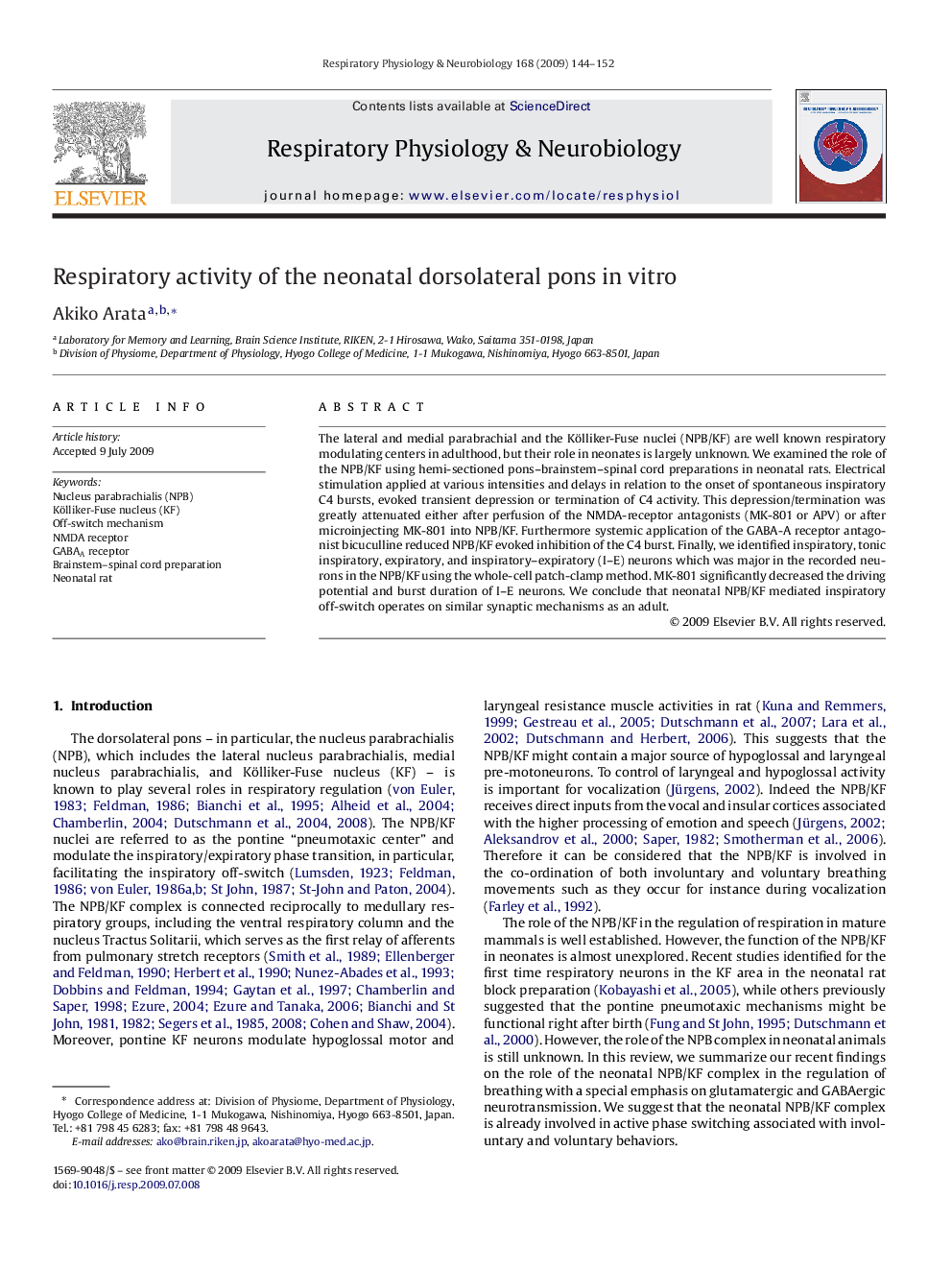| Article ID | Journal | Published Year | Pages | File Type |
|---|---|---|---|---|
| 2847775 | Respiratory Physiology & Neurobiology | 2009 | 9 Pages |
The lateral and medial parabrachial and the Kölliker-Fuse nuclei (NPB/KF) are well known respiratory modulating centers in adulthood, but their role in neonates is largely unknown. We examined the role of the NPB/KF using hemi-sectioned pons–brainstem–spinal cord preparations in neonatal rats. Electrical stimulation applied at various intensities and delays in relation to the onset of spontaneous inspiratory C4 bursts, evoked transient depression or termination of C4 activity. This depression/termination was greatly attenuated either after perfusion of the NMDA-receptor antagonists (MK-801 or APV) or after microinjecting MK-801 into NPB/KF. Furthermore systemic application of the GABA-A receptor antagonist bicuculline reduced NPB/KF evoked inhibition of the C4 burst. Finally, we identified inspiratory, tonic inspiratory, expiratory, and inspiratory–expiratory (I–E) neurons which was major in the recorded neurons in the NPB/KF using the whole-cell patch-clamp method. MK-801 significantly decreased the driving potential and burst duration of I–E neurons. We conclude that neonatal NPB/KF mediated inspiratory off-switch operates on similar synaptic mechanisms as an adult.
